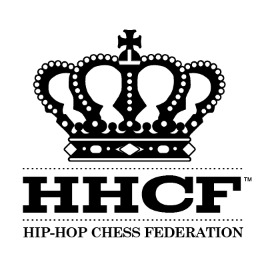Hip-Hop Chess Federation practices Jiu-Jitsu at Zaytuna College

April 2, 2018
Thursday evening atop the hill at Zaytuna College in Berkeley: The sun had set and the lights of cars, traffic and surrounding Bay Area cities had begun to push back the night. It was a tranquil moment before the group of students began jiu-jitsu training.
Hip Hop Chess Federation (HHCF) was founded in 2006. The Hip Hop Chess Federation is a non-profit organization that uses hip-hop, chess and martial arts to promote peace, non-violence and mind-body wellness. At the end of 2017, founder Adisa Banjoko acquired a space at Zaytuna College to teach his course called Chess and Jiu-Jitsu. Zaytuna is a Muslim liberal art college in Berkeley. Founded in 2008, it is the first accredited Muslim undergraduate institution in the United States.
Starting four weeks ago, the nighttime 6 p.m. to 8 p.m. session opened to Zaytuna students and supporters of the HHCF. On average the group consists of about a dozen people including HHCF founder Adisa Banjoko and Hamza Yusuf, one of Zaytuna’s founders. The class is also occasionally visited by guests who teach elements from other martial arts.
Jiu-Jitsu is a martial art that revolves around the use of joint locks and chokes to force the opponent into submission. It originated in Japan but was later expanded upon by Japanese-taught Brazilian practitioners. Today, it is still practiced traditionally, but it has been modified for use in the sport of mixed martial arts where the traditional uniform is not used.
Banjoko was born in San Francisco in 1970 and he grew up in San Bruno. Starting from early on as a child, he developed an interest in martial arts, hip-hop and chess. But how exactly do these things go hand in hand with one another?
“When I was four, my father taught me chess. I sucked horribly, but the game made me happy and I saw the game as a reflection of life, even then,” Banjoko said. “When Hip-Hop exploded in the ‘80s I was a human beatbox, I was a party DJ and I was a rapper. By 1993, I had written for top magazines. Eazy E, Tupac and Master P were my friends. The DJs loved martial arts and the rappers loved chess.”
Within chess, within hip-hop and within martial arts there are rhythm, beat and tempo. Whether each of these directly influences the other or not they all share this in common. In chess, the best players participate in timed games where mental focus, adaptation and precision are key. The same can be said of martial arts in the way that fighters develop a rhythm in response to their opponents’ tendencies.
“I went to a juvenile hall in San Francisco, and all the kids played chess,” Banjoko said. “I could not understand why they made the bad decisions that got them locked up. This inspired me to use the flash of hip-hop to teach kids how to be more critical in their thinking, and to use martial arts to achieve mind and body balance.”
Zaytuna College is but one location being used by the HHCF to practice jiu-jitsu, enrich minds and help keep young men and women out of trouble. Banjoko and his wife also run youth programs at the Gardener Center in San Jose and at another location in East Palo Alto. He is adamant in his belief that the combination of hip-hop, chess and martial arts come together to create a balanced mind and body.
Thursday night practice at Zaytuna begins with a warm-up consisting of push up variations, hip mobility stretches and ukemi. Ukemi originates from judo as a falling technique, in which the user practices breaking a fall by tucking their chin and slapping their arms down on the mat at an angle. This prevents the neck from whipping and helps absorb the impact of the fall.
The evening continues with Banjoko selecting a series of techniques to teach the class. One of his favorite sequences is called “Jiu-Jitsu 101.” During this drill, one person begins on top of their partner, and the person on bottom performs a chain of movements that ultimately ends with them in the top position.
“You can think of it as a drilling exercise that helps develop the ability to advance from the worst position into the most dominant position,” Banjoko described.
Finally, the night ends with the class pairing up for three to five minute live sessions. During this time both participants engage in what is essentially a simulated jiu-jitsu match. It is an opportunity to respectfully practice the techniques of the night all while challenging oneself and their partner.
By the end of the night, the jiu-jitsu warriors are gleaming with sweat and their skin is tender from the rough abrasions of their uniforms. They feel tired and sore. The evening ends with all the members of the class lining up, shaking hands and saying the words, “Thank you for improving me.”
















